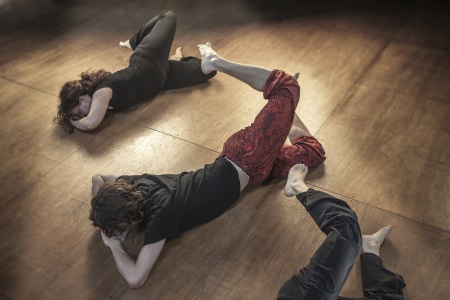
Awareness Through Movement® Classes
Update for 2024: I have currently paused teaching public Awareness Through Movement® classes in San Francisco. Please contact me for individual sessions.
Class Description
Awareness Through Movement® lessons allow us to attend to the process of our movement (the “how” in how we move) in order to find more comfort, more ease, less pain, and more options. Movement is viewed as a process of self-inquiry, rather than as a achievement or end to itself (like in most exercising). This change of focus allows us to find the ways we interfere or self-limit our movement potential so that when the time comes to act outside of the class, we can bring these new options into accomplishing our movement goals more easily and directly.
Classes are open to any level of ability including beginners and those with physical limitations. Please contact me to find out more.
Further Reading
From Moshe Feldenkrais, “Body and Mind”, 1980:
I usually make clear that the point of my work is to lead to awareness in action, or the ability to make contact with one’s own skeleton and muscles and with the environment practically simultaneously. This is not ‘relaxation’, for true relaxation can be maintained only when doing nothing. The aim is not complete relaxation but healthy, powerful, easy and pleasurable exertion. The reduction of tension is necessary because efficient movement should be effortless. Inefficiency is sensed as effort and prevents doing more and better.
[…]
The gradual reduction of useless effort is necessary in order to increase kinesthetic sensitivity, without which a person cannot become self regulating.
[…]
All exercises are arranged to produce a neat change in sensation at the end of the lesson and usually a more or less lasting effect. This enables pupils to find connections between different parts of the body, as for instance between the left shoulder blade and the right hip joint, or between the eye muscle and the toes.
[…]
But whatever the exercise or the principle used, the lesson is so arranged that without concentration, without trying to sense differences, without real attention, pupils cannot proceed to the next stage. Repetition, just mechanical repetition without attention, is discouraged, made impossible in fact. Many exercises consist in attending to the means of achieving a goal and not to the goal itself, which is an important way of reducing tension. All these exercises aim at achieving mental and physical cooordination and in particular good erect posture and correct action.
[…]
Finally, self-knowledge through awareness is the goal of reeducation. As we become aware of what we are doing in fact, and not what we say or think we are doing, the way to improvement is wide open to us.